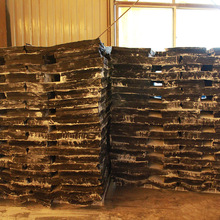您现在的位置是:半岛新闻网 > 关于我们
Researchers create artificial, modifiable cells with programmable DNA
半岛新闻网2024-09-21 18:38:35【关于我们】2人已围观
简介By subscribing, you agree to our Terms of Use and Policies You may unsubscribe at any time.Researche
By subscribing, you agree to our Terms of Use and Policies You may unsubscribe at any time.
Researchers at University of North Carolina-Chapel Hill have successfully engineered functional artificial cells in the lab which behave like living cells.
Ronit Freeman and her team have revealed their success in manipulating DNA and proteins, which are fundamental components of life, to engineer artificial cells that closely resemble those found in the human body.
As per Freeman, the synthetic cells were stable even at 122°Fahrenheit (50° Celsius). This opens up the “possibility of manufacturing cells with extraordinary capabilities in environments normally unsuitable to human life.”
Featured Video RelatedInstead of creating materials that are made to last, Freeman says their materials are made to task — perform a specific function and then modify themselves to serve a new function.
This achievement holds significant promise for advancements in regenerative medicine, drug delivery methods, and diagnostic technologies.
“With this discovery, we can think of engineering fabrics or tissues that can be sensitive to changes in their environment and behave in dynamic ways,” states Freeman.
Generating artificial cells
Cells and tissues rely on proteins to carry out various tasks and construct vital structures. One such structure, the cytoskeleton, serves as the framework of a cell, enabling it to function properly.
The cytoskeleton is crucial for maintaining cell shape and facilitating responses to the surrounding environment.
The team developed artificial cells with functional cytoskeletons using a novel approach that bypasses natural proteins. They developed a cutting-edge technology called programmable peptide-DNA technology.
This method orchestrates a collaboration between peptides, the basic building blocks of proteins, and repurposed genetic material to construct a cytoskeleton.
As a result, these engineered cells can adapt their shape and respond to environmental cues, showcasing the remarkable potential of synthetic biology.
Possible practical applications
“DNA does not normally appear in a cytoskeleton. We reprogrammed sequences of DNA so that it acts as an architectural material, binding the peptides together,” Freeman said. “Once this programmed material was placed in a droplet of water, the structures took shape.”
This never-before-seen capability to program DNA empowers scientists to design cells tailored for specific purposes and even regulate how these cells respond to external stresses.
While synthetic cells crafted by the Freeman Lab lack the complexity of living cells, they offer a level of predictability and resilience to harsh conditions such as extreme temperatures.
Rather than focusing on creating enduring materials, Freeman emphasizes the adaptability of these cells—they are engineered to perform specific functions and then adapt to new tasks.
By incorporating different peptide or DNA designs, these materials can be customized to program cells within fabrics or tissues. This versatility opens up possibilities for integration with other synthetic cell technologies, potentially revolutionizing fields like biotechnology and medicine.
“This research helps us understand what makes life,” Freeman says. “This synthetic cell technology will not just enable us to reproduce what nature does, but also make materials that surpass biology.”
This study was published in Nature Chemistry.
很赞哦!(9)
相关文章
- 特写|在农事定向大赛遇见和美乡村
- China replicates Olympic 'bubble' for rare sports event
- Gate receipts from first T20I to aid flood victims
- S. Korea conveys concerns to US over new EV tax credit law: official
- Alcaraz, Sinner survive US Open wobbles
- Marquez to return to racing at Aragon Grand Prix
- Compensate migrant workers: WC fans
- 省药监局第二检查分局来雅检查药品生产企业复工等情况
- Courting Disaster
- 延伸种植链和产业链 增加产业发展经济效益
热门文章
站长推荐

Best smart home deal: The Amazon Smart Thermostat is just $63.99

Watch Elon Musk's TED talk, in which he explains his Twitter bid
The Sims: 22 Years and Counting

What does heteroflexible mean?

18 Slightly Submerged Architectural Wonders

France's Garcia eyes Paris Olympics

Grealish, Haaland destroy Wolves

Elon Musk still needs pre